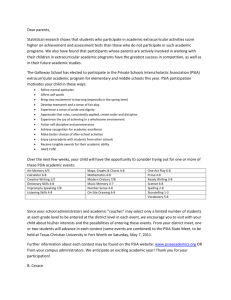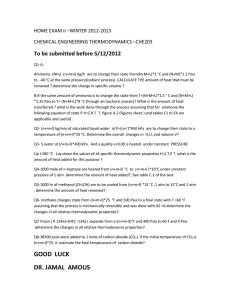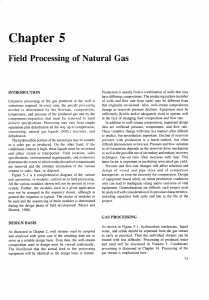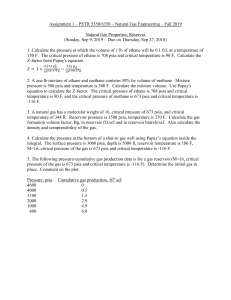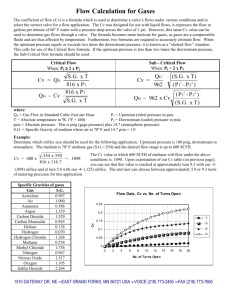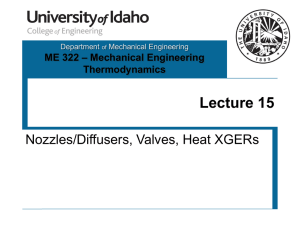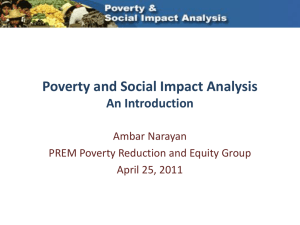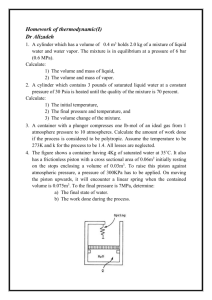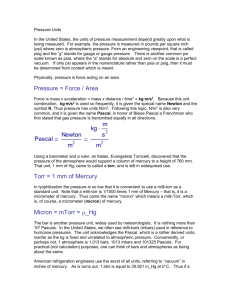Poverty and Social Impact Analysis in the World Bank
advertisement
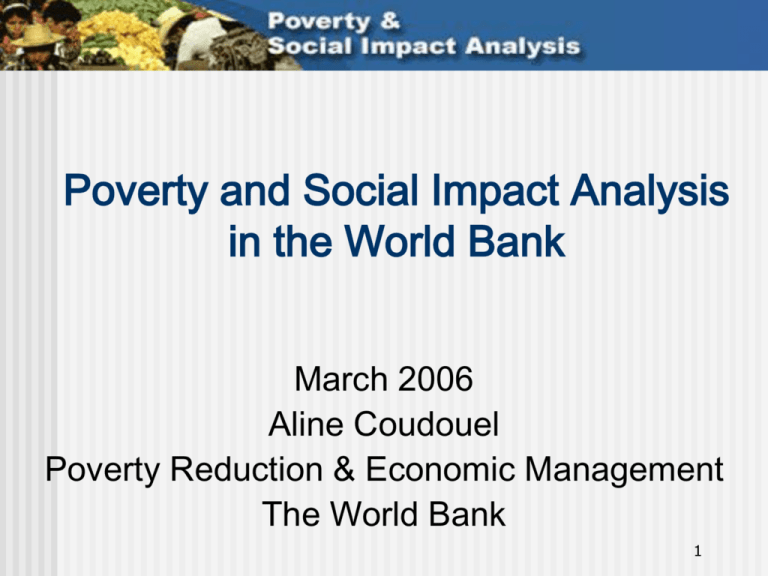
Poverty and Social Impact Analysis in the World Bank March 2006 Aline Coudouel Poverty Reduction & Economic Management The World Bank 1 What PSIA does Analysis of distributional impact of policy interventions on the well-being of different groups, with a particular focus on the poor and vulnerable. PSIA helps to: Keep a pro-poor focus in policy reform Underpin policy reforms with empirical evidence Provide inputs towards a better policy dialogue Contribute to country ownership of policies Ultimately: Enhance the effectiveness of interventions 2 PSIA in the World Bank Initial efforts: Develop users’ guide Prepare technical guidance Intensive training Provide additional funding to teams Results: Over 150 PSIAs since 2002, in 72 countries After phase with incremental funds, now funded from regular budgets 3 Regional distribution of PSIAs with incremental funding 60 FY06 FY05 50 FY04 Number of PSIAs 40 FY03 30 20 10 0 Africa Latin America & Carribean Europe & East Asia & Central Asia Pacific South Asia Middle East North Africa 4 Sectoral distribution of PSIAs with incremental funding 20 Middle East North Africa 18 South Asia 16 East Asia & Pacific Latin America & Carribean 14 Europe and Central Asia 12 Africa 10 8 6 4 2 rb an U Fu In fra el st ru ct ur e H ou si ng La nd In D du ec st en ry tra liz at io n U til iti es So ci al M ac ro Ag ric ul Pu tu re bl ic Se ct or Tr ad e 0 5 Five analytical lessons 1. Impact on different groups Operational (and reform-specific) groups 2. Negative and positive impacts, influence Political economy of reforms is critical 3. Multiple channels, short and long-term Net impacts (affect direction/size of impact) 4. Institutions matter Transaction costs, incentives, performance, capacity 5. Choice of methods and team Multiple data sources, complementarity Multi-disciplinary best, but hard 6 Five operational lessons 1. Reform identification 2. Analytical work 3. Reform implementing agency close to analytical process Policy dialogue and debate 5. Rigorous and unbiased, transparent and easy to understand Interface analysis/policy making 4. From national policy process, selectivity essential, specific works best Align with broader policy cycle Policy process no clear beginning/end (continuous scrutiny) Participation Part of broader policy process (choice and debate) No monopoly on analysis (but objectivity and rigor) Stakeholders’ perception part of inputs into analysis 7 Challenge: Consolidating success Steady state scenario PSIA conducted by countries, part of PRS process WB relies on PRS (or similar) In the meantime… Part of operational policy on Development Policy Lending (OP 8.60) Mainstreaming in analytical and operational tools Country Assistance Strategy, analytical pieces (PA, CEM, PER), lending (PRSC, DPL) 8 Ensuring the future: country capacity 1. Capacity to analyze and monitor: Research organizations and government Data collection and analysis Methods should be understandable and replicable. 2. Capacity to use results: Ability of policymakers to utilize the findings Dissemination transparent Communication of results in right format 3. Interest for evidence-based policymaking Multi-donor effort ongoing. 9 www.worldbank.org/psia PSIA User’s Guide PSIA e-learning course PSIA Good practice Note Economic tools for impact analysis: • “The impact of Economic Policies on Poverty and Income Distribution: Evaluation Techniques and Tools” (Bourguignon and Pereira da Silva, 2003) • “Evaluating the Impact of Macroeconomic Policies on Poverty and Income Distribution Using Micro-Macro Linkages Models” (forthcoming) Tools for Institutional, Political and Social analysis • www.worldbank.org/tips Country examples, case studies (book out June 2006) Guidance on specific sectors • Trade, monetary policy, utility provision, agricultural markets, land policy, education (Volume 1) • Health, labor market, pension, decentralization, public sector downsizing, taxation, and macroeconomic modeling (Volume 2) 10
